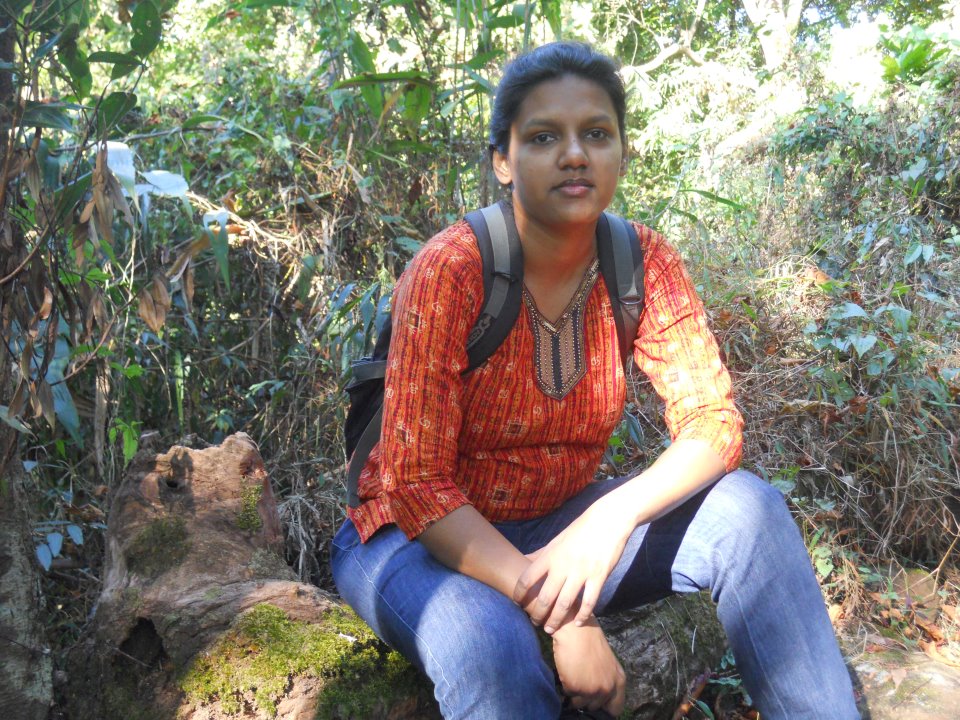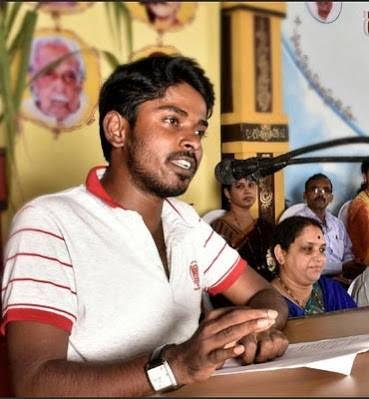Rahi Gaikwad
 The name Ranvir is usually given to a boy. It means brave warrior or battle hero. This is the name a section of landed castes in Bihar, chiefly the Bhumihar landlords, adopted to christen themselves as an army of warriors, the Ranvir Sena
The name Ranvir is usually given to a boy. It means brave warrior or battle hero. This is the name a section of landed castes in Bihar, chiefly the Bhumihar landlords, adopted to christen themselves as an army of warriors, the Ranvir Sena
In Hindu mythology, the idea of the warrior king who wages a battle against demons to root out evil is all-pervasive. These god-vs.-demon battles involve killing, beheading, slaying and using all kinds of tricks to ensnare the enemy. The warrior in Hindu faith, epitomised in the legend of Ram in popular myth-making, is ascribed the quintessential “masculine” virtues of physical strength by virtue of which he is able to be the guardian and protector of the religious moral order.
Hindutva extremist groups share and draw upon this concept in their aggressive pursuit that takes on battle-like proportions, to maintain their supremacy in a certain social order they believe has been ordained by religion and tradition.
The learnt, internalised and “male-styled” violence of the warrior king, thus, becomes the essential and indeed the only strategy to ensure the continuation of status quo. And their war cry:
“We will not allow Bhojpur to be turned into Russia or China; with our guns we will remove all signs of red flag not only from Bhojpur but from the entire country, we will re-establish the social system of our ancestors and revive the old customs and laws.” (From the CPI ML website quoting Ranvir Sena’s propaganda).
Ashwani Kumar from TISS writes in The Hindu:
“The origin of the Ranvir Sena is shrouded in myths and legends. According to local narratives, it is named after the 19th century Bhumihar warrior Ranvir Choudhary who fought against local Rajput landlords for Bhumihar supremacy and honour.”
On July 11, 1996, a band of these self-proclaimed brave warriors entered the homes of dalit villagers and gunned down 21 people, 20 of whom were women and children.

As an EPW article notes, “It was a massacre perpetrated in broad daylight that targeted women and children, including pregnant women and infants, with a kind of barbarity seen only in genocides marked by the motto of ethnic cleansing.”
A year later the Ranvir Sena carried out the Laxmanpur Bathe massacre which again saw unimaginable acts of murder, mutilations and extreme sexual brutality that one usually read about in Darfur when it was witnessing the worst genocide.
The Brutality of Caste Violence
There could be different kinds of violence. That which is done for pecuniary gains or to strike fear and gain unsanctioned hold over an area and people. There is reactionary violence that stems from a sense of hurt or injustice.
And then there is caste violence, peculiar to our society and way more perverse in its design and intent. For what kind of individual and collective mindset does it take to pump a child with bullets or draw a sword through the body of an infant, to take an aim at the vagina of a girl and slice off breasts from the bodies of women – all by design?
Such violence can only be fuelled by intense resentment and anger at the assertion of the dalits and weaker sections. How dare they demand anything more than servility? This violence is engineered to maintain the structure of caste society, which has religious sanction. How can we be anything other than noble if we are required to kill to maintain it?
“The land is ours. The crops belong to us. They [the labourers] did not want to work, and moreover, hampered our efforts by burning our machines and imposing economic blockades. So, they had it coming.” (The Hindu, April 19, 2012)

Bathani Tola memorial to the 21 killed by Ranvir Sena on July/11/96
The Patna High Court acquitting of all the 23 accused in the case, once again proved the Indian judicial system’s utter incapability to deliver even a semblance of justice to dalits. There is not even a pretence of it.
Right from the very first stage of filing an FIR and begging the police to investigate, to the last step of knocking on the doors of the Supreme Court, the police and the legal framework operate against the dalits thwarting any attempt to seek redress. Every petty procedure, every petty official poses an impediment and the gigantic and overwhelming legal edifice becomes a giant roadblock to justice.
No one understands this reality better than the dalits (and adivasis) themselves. In his news report ‘A dalit goes to court’, journalist P Sainath points out, “When Bhanwari Devi’s 13-year-old daughter was raped in the bajra fields by an upper caste youth, she picked up a lathi and went after the rapist herself. She had no faith in police and courts.”
The Bathani acquittals will only strengthen her faithlessness. The violence the outfit’s supporters unleashed in the aftermath of Ranvir Sena chief Bhrameshwar Singh’s murder presents in full measure the grim and brutal reality that nothing has fundamentally changed in the badlands of Bihar.
Caste violence is the essence of Nitish Kumar’s Bihar. What he does about Bathanis and Bathes should be more important than his mere stance of ‘development and justice’. Else, sooner or later his bluff will be called, like now.
The media (and I include myself) needs to induce more discernment in its outlook towards political pitches and stop being seduced by empty development jargon. It’s proclivity for personality politics is the bane of political reportage. It obfuscates not just the “personality” at hand, creating instead an image cult, but also politics itself.
In the backdrop of the Bathani and Bathe carnages, and all others that preceded and followed them, let us ask what is Nitish Kumar’s politics? What does he mean by good governance? Why was the Amir Das Commission, constituted to probe the Bathani killings, disbanded after he became Chief Minister in 2005 (with the BJP’s support)? Since the Ranvir Sena reportedly enjoys political patronage, whose development are they talking about exactly? And justice for whom?
Was it the conviction, which came after 16 years justice? If the Patna High Court had upheld the conviction of the 23 accused, would it have been called justice? The proverbial justice has long been delayed and denied. The State may well appeal to the Supreme Court; there is no other option before it. But it has already missed the bus. What is expected is the absolute bare minimum now. The lowest common denominator called fire fighting.
Governments have always treated caste atrocity cases with utmost contempt and apathy. If evidence cannot be found in incidents on the scale of Bathani, what kind of redress can dalits expect from the daily agony of discrimination?
When the Sena-BJP government came to power in Maharashtra in 1999, a chunk of caste atrocity cases were summarily dropped without a whisper (The fear of democracy of the privileged – The Hindu, December 8, 2006). The current dispensation in Maharashtra, of the Marathas (who go by the name of the Nationalist Congress Party) and the Congress is no different.
Khairlanji happened in the constituency of a top NCP leader. He once said in an interaction with reporters during a campaign trail in 2009 that incidents like Khairlanji are a routine feature.
There are no rape or caste atrocity charges in Khairlanji. Even though fact- finding reports spoke of objects that were found stuffed in the vaginas of the women victims. It took a massive agitation by dalits, the burning of a train and arrests of activists who were maliciously labelled as Naxals, to reveal to the government the rather alien fact that when there is a crime there must be punishment.
Such is the concentration of the powerful castes in politics and the incest between political interests and dominant caste interests that it makes Indian democracy look like autocracy. Manjushree Thapa put it best (in the context of Nepal): With democrats like these, who needs autocrats?
The verdict should seal the lips of the cheerleaders of the Nitish government and pull them down from riding blindly the bandwagon of development.
It is ironic that the date of Bathani massacre, i.e. July 11, is associated with a famous date oft used in the media. We in the media love coining landmark dates for effect, sensationalism, whatever you call it; and sometimes owing to space crunch. So, 7/11 for instance is associated with the Mumbai train blasts of 2006. Each of the terror attacks have been made memorable by such iconic dates.
As a lived reality, however, caste-based attacks do not take up so much space and attention in the nation’s consciousness. No number of atrocities has had the power to galvanise a country’s moral outrage as a single Jessica or Ruchika or Arushi had.
Those who died in Bathani Tola were not people like us. But they would like to know as they have been asking: If the 23 acquitted did not kill, who did? Who can answer this for them? The warriors are now walking free. There is no telling when and where they will strike next.
~~~
Rahi Gaikwad is a journalist based in Mumbai.
Images courtesy: the Internet










